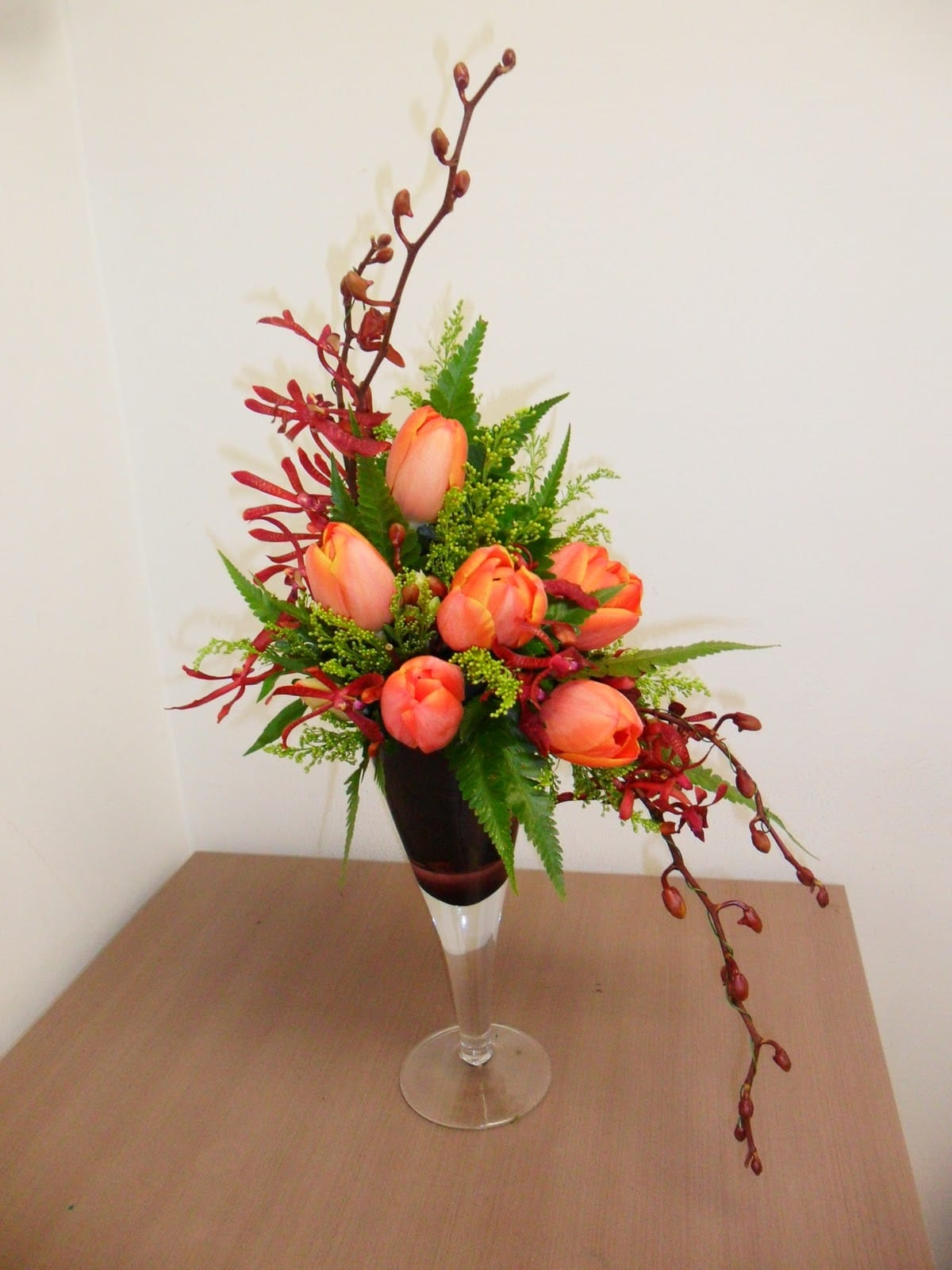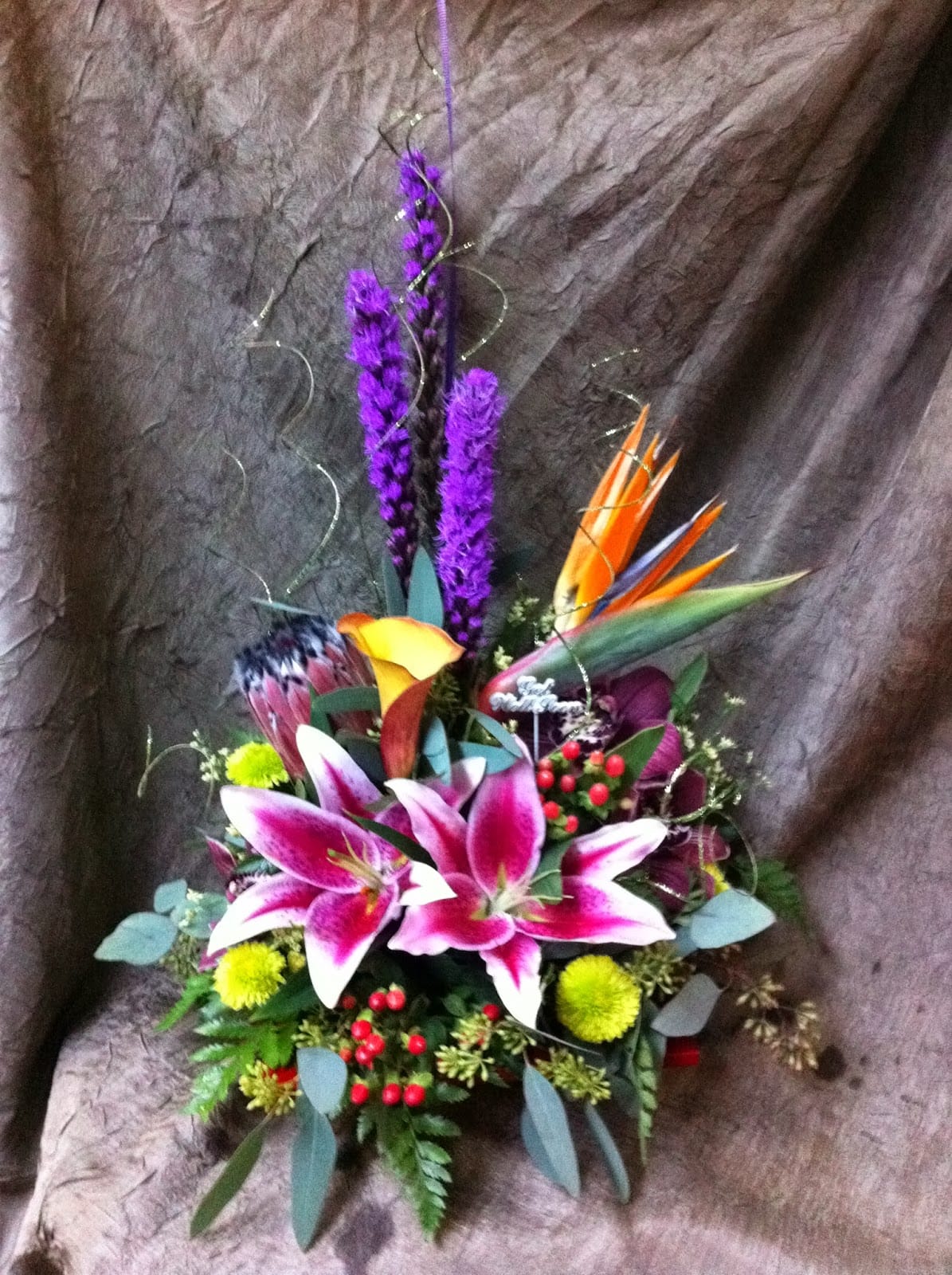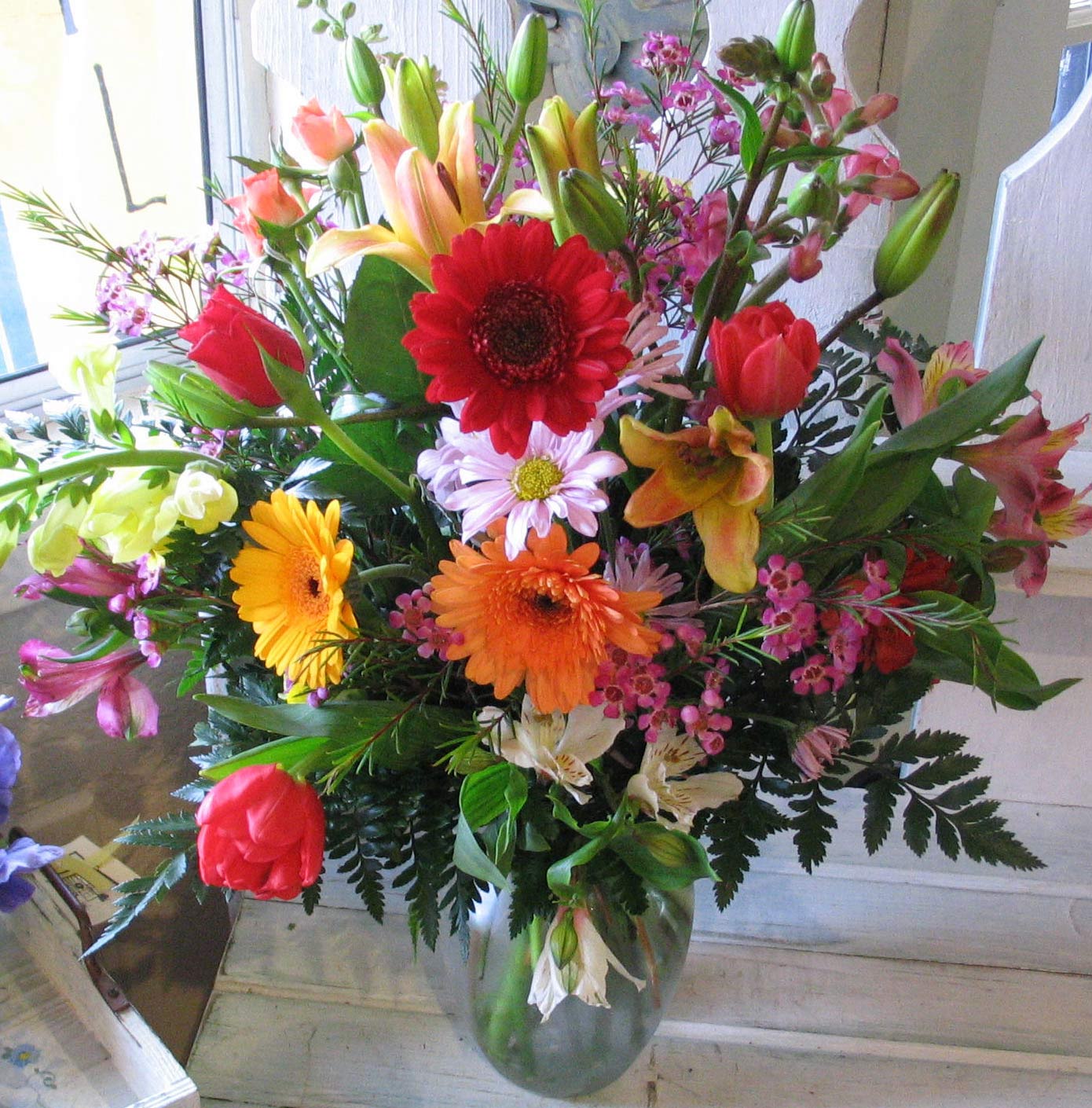The Art and Soul of Floral Arrangement: A Journey Through Techniques, Styles, and Meaning

Floral arrangement, at its core, is more than just sticking flowers in a vase. It’s a delicate art form, a language spoken through color, texture, and form. It’s a way to express emotions, celebrate milestones, and bring the beauty of the natural world into our homes and lives. From the simplest posy to the most elaborate installation, floral arrangements possess a unique power to uplift, inspire, and connect us to the earth.
This article delves into the fascinating world of floral arrangement, exploring its history, techniques, styles, and the deeper meaning behind this timeless art. We’ll explore the essential tools and materials, the fundamental principles of design, and the diverse styles that have emerged over centuries. Whether you’re a seasoned florist or a budding enthusiast, this guide will provide a comprehensive understanding of the art and soul of floral arrangement.
A Brief History: From Ancient Rituals to Modern Masterpieces
The roots of floral arrangement can be traced back to ancient civilizations. Evidence suggests that Egyptians used floral arrangements for religious ceremonies, funerals, and decorative purposes as early as 2500 BCE. They favored symmetrical arrangements, often using lotus flowers, papyrus, and branches.
The Greeks and Romans also embraced floral arrangements, using them for garlands, wreaths, and celebratory decorations. They valued fragrance and symbolism, incorporating flowers with specific meanings into their arrangements.
During the Middle Ages, floral arrangements were largely confined to monasteries and royal courts. However, the Renaissance saw a resurgence of interest in art and beauty, leading to more elaborate and sophisticated floral designs.
The 17th and 18th centuries witnessed the emergence of distinct floral styles in Europe. The Dutch masters, known for their still-life paintings, captured the beauty of floral arrangements with incredible detail and realism. The Victorian era, with its emphasis on sentimentality and symbolism, saw the rise of elaborate floral displays that conveyed specific messages through the language of flowers.
In the 20th and 21st centuries, floral arrangement has continued to evolve, embracing new techniques, materials, and styles. From the minimalist Ikebana of Japan to the contemporary designs of modern florists, the art form remains a vibrant and dynamic expression of creativity.
Essential Tools and Materials: Setting the Stage for Success
Before embarking on your floral journey, it’s essential to gather the necessary tools and materials. Here’s a breakdown of the essentials:

- Cutting Tools: Sharp floral shears or a knife are crucial for clean cuts that promote water absorption. Avoid using dull scissors, as they can crush the stems and shorten the lifespan of the flowers.
- Vases and Containers: A wide variety of vases and containers are available, from classic glass vases to rustic ceramic pots. Choose a container that complements the style and size of your arrangement.
- Floral Foam (Oasis): This porous material provides support and hydration for the flowers. Soak the floral foam in water before use.
- Floral Tape: This waterproof tape is used to create a grid on the top of the vase, providing a framework for the flowers.
- Floral Wire: Used to support delicate stems or to create unique shapes and structures.
- Wire Cutters: Essential for cutting floral wire to the desired length.
- Watering Can or Spray Bottle: Used to keep the floral foam and flowers hydrated.
- Preservatives: Floral preservatives can extend the lifespan of your arrangement by providing nutrients and inhibiting bacterial growth.


Understanding the Principles of Design: Creating Harmony and Balance
The principles of design are the foundation of any successful floral arrangement. These principles guide the arrangement’s composition, ensuring visual harmony and balance.
- Balance: Refers to the visual weight of the arrangement. Symmetrical balance is achieved by creating a mirror image on both sides of the arrangement, while asymmetrical balance creates a sense of dynamism and movement.
- Proportion: The relationship between the size of the flowers, the container, and the surrounding space. A well-proportioned arrangement creates a sense of visual harmony.
- Rhythm: The visual flow of the arrangement, created by repeating elements such as color, shape, or texture. Rhythm guides the eye through the arrangement, creating a sense of movement and interest.
- Dominance: The focal point of the arrangement, the area that draws the eye first. The focal point can be created by using a larger flower, a contrasting color, or a unique texture.
- Unity: The overall cohesiveness of the arrangement, ensuring that all the elements work together harmoniously. Unity is achieved by using a consistent color palette, a similar style, or a common theme.
Exploring Diverse Styles: From Traditional to Contemporary
Floral arrangement encompasses a wide range of styles, each with its own unique characteristics and aesthetic.
- Traditional: Characterized by symmetrical arrangements, classic flower combinations, and a formal aesthetic. Often features roses, carnations, and lilies.
- Contemporary: Embraces asymmetry, bold colors, and unconventional materials. Often incorporates geometric shapes, unusual textures, and unexpected combinations.
- Ikebana: A Japanese art form that emphasizes minimalism, symbolism, and the beauty of natural lines. Focuses on creating a harmonious balance between heaven, earth, and humanity.
- English Garden: Captures the charm and abundance of an English garden, featuring a mix of flowers in a variety of colors and textures. Often incorporates roses, peonies, and hydrangeas.
- Bohemian: A free-spirited and eclectic style that embraces natural elements, wildflowers, and unconventional textures. Often features pampas grass, dried flowers, and feathers.
- Minimalist: Emphasizes simplicity, clean lines, and a limited color palette. Often features a single type of flower or a small grouping of flowers in a simple vase.
The Language of Flowers: Decoding the Symbolism
Flowers have been used to convey specific meanings for centuries. Understanding the language of flowers can add a deeper layer of significance to your floral arrangements.
- Roses: Symbolize love, passion, and romance. Different colors of roses have different meanings.
- Lilies: Represent purity, innocence, and rebirth.
- Carnations: Symbolize love, admiration, and gratitude.
- Sunflowers: Represent adoration, loyalty, and longevity.
- Tulips: Symbolize perfect love and fame.
- Hydrangeas: Symbolize gratitude, understanding, and heartfelt emotion.
Tips and Tricks for Long-Lasting Beauty:
- Choose Fresh Flowers: Look for flowers with firm stems, vibrant colors, and unopened buds.
- Cut Stems at an Angle: This increases the surface area for water absorption.
- Remove Foliage Below the Waterline: This prevents bacterial growth.
- Use Floral Preservative: This provides nutrients and inhibits bacterial growth.
- Change the Water Regularly: Every 1-2 days, replace the water and add fresh preservative.
- Keep Flowers Away from Direct Sunlight and Heat: These can cause the flowers to wilt prematurely.
- Mist the Flowers Regularly: This helps to keep them hydrated.
Beyond the Basics: Taking Your Floral Art to the Next Level
Once you’ve mastered the fundamentals of floral arrangement, you can explore more advanced techniques and styles. Consider taking a floral design class, experimenting with different materials, and exploring the work of renowned florists. Don’t be afraid to break the rules and create your own unique style.
Floral arrangement is a journey of discovery, a constant exploration of beauty and creativity. With practice, patience, and a passion for flowers, you can unlock your inner florist and create stunning arrangements that bring joy and inspiration to your life.
Frequently Asked Questions (FAQ):
Q: What are the best flowers for beginners?
A: Some easy-to-work-with flowers for beginners include carnations, daisies, sunflowers, and alstroemeria. These flowers are relatively inexpensive, readily available, and have sturdy stems that are easy to arrange.
Q: How do I choose the right vase for my arrangement?
A: Consider the size, shape, and style of your arrangement. Tall vases are best for tall, dramatic arrangements, while shorter vases are suitable for smaller, more compact arrangements. Choose a vase that complements the flowers and enhances their beauty.
Q: How do I make my flowers last longer?
A: Follow the tips mentioned above: choose fresh flowers, cut stems at an angle, remove foliage below the waterline, use floral preservative, change the water regularly, and keep flowers away from direct sunlight and heat.
Q: How do I create a focal point in my arrangement?
A: Use a larger flower, a contrasting color, or a unique texture to create a focal point. Position the focal point slightly off-center to create visual interest.
Q: What are some common mistakes to avoid when arranging flowers?
A: Some common mistakes include using dull scissors, overcrowding the vase, not removing foliage below the waterline, and placing the arrangement in direct sunlight.
Q: Can I use artificial flowers in my arrangements?
A: Yes, artificial flowers can be used in arrangements, especially for long-lasting displays or in areas where fresh flowers are not practical. Choose high-quality artificial flowers that look realistic.
Q: How do I condition my flowers before arranging them?
A: Conditioning involves preparing your flowers for arrangement to maximize their lifespan. This includes cutting the stems at an angle, removing any damaged petals or leaves, and hydrating the flowers in a cool, dark place for a few hours before arranging.
Q: What is the best way to transport a floral arrangement?
A: Use a box or container that is large enough to accommodate the arrangement without crushing the flowers. Secure the vase or container to prevent it from tipping over.
Q: How do I dry flowers for preservation?
A: There are several methods for drying flowers, including air drying, pressing, and using silica gel. Air drying is the simplest method: hang the flowers upside down in a cool, dry, and dark place.
Q: Where can I learn more about floral arrangement?
A: Consider taking a floral design class, reading books on floral arrangement, watching online tutorials, and visiting flower shows and gardens.
Conclusion:
Floral arrangement is a captivating art form that allows us to connect with nature, express our creativity, and bring beauty into our lives. From understanding the fundamental principles of design to exploring diverse styles and the language of flowers, this guide has provided a comprehensive overview of the art and soul of floral arrangement.
Whether you’re creating a simple bouquet for a friend or a grand centerpiece for a special occasion, remember that floral arrangement is a personal expression. Embrace your creativity, experiment with different techniques and styles, and most importantly, have fun! The world of flowers is waiting to be explored, and the possibilities are endless. So, gather your tools, choose your blooms, and embark on your own floral adventure. The joy and satisfaction of creating something beautiful with your own hands are immeasurable. Let your floral creations bloom and inspire, spreading beauty and joy wherever they go.
